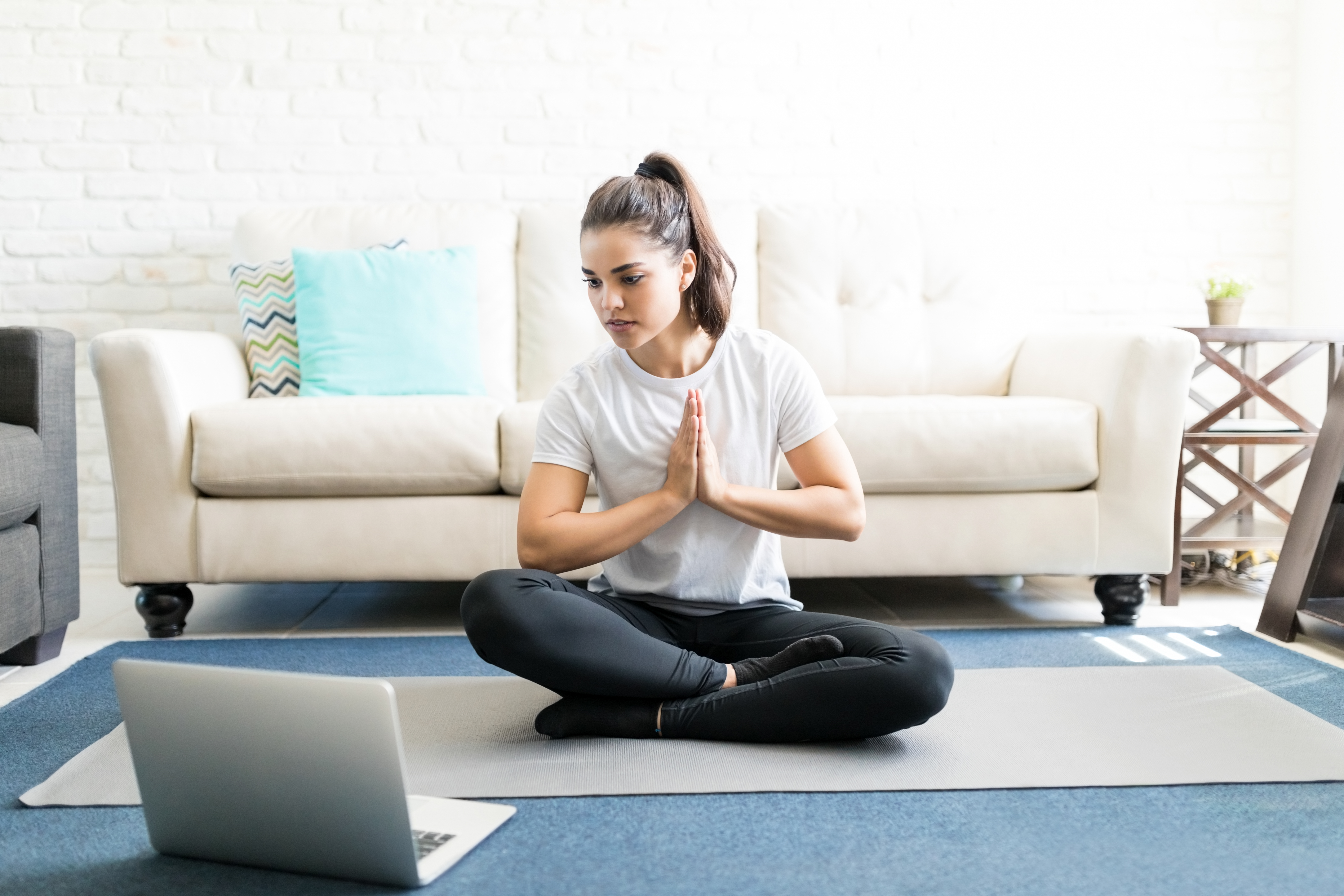“At-home fitness” was once a term that conjured up images of a lone stationary bike whose main function was to hold piles of clothes that never made their way into your closet. Today, exercising at home has become a worldwide necessity amid the COVID-19 pandemic.
So just how many people are really turning their bedroom or living room into a workout studio? Well, even before we knew what SARS-CoV-2 was, working out at home had started to take on an entirely new connotation of chic-ness with the emergence of “smart” home workout equipment. Take start-ups like Peloton, TONAL, and Mirror, just to name a few, that stream classes to you at home, so you get a gym-caliber workout while sheltering in place. And the Global Wellness Institute reported last year that at-home fitness was already on track to eclipse traditional gyms and even elite fitness boutiques in market share. The appeal is different for everyone, but working out at home is often an antidote to the common excuses people find to skip a workout. Excuse #1: “I’m too busy!”
The best part? While equipment can be a great investment for some, it’s totally possible to get an effective home workout without shelling out cash for high-ticket exercise gear. Just follow these tips to get the most out of your movement.
Beat comparison anxiety
While there’s much to gain from an expert-guided workout, the group setting of fitness classes isn’t for everyone. “It’s vulnerable,” Debra Kissen, Ph.D., executive director at Light On Anxiety, tells Refinery29. “You might feel uncomfortable in what you’re wearing, and the way you’re moving your body.” But working out at home takes others out of the equation so you can focus on yourself. Online offerings, like Gaia (for yoga) or DailyBurn (for a multitude of workout styles), give you the chance to enjoy the experience of a guided class from home without the added stress.
Take a mindful approach
A bodyweight workout makes it possible to do strength training at home — without a single piece of equipment. The key is to really concentrate on how your body feels during each exercise; research shows this helps you get more out of your workout and even contributes to feeling more satisfied with your progress (which can keep you committed). A couple of tips to keep your focus: Prioritize your breathing, and don’t overthink whether you’re doing everything perfectly. “If you’re doing little tentative movements trying to get it all right, it’s just going to keep that anxiety cycle in motion because your body is going to be tense,” Kissen advises Refinery29.
Rest and recover
It’s easy to skip the cool-down when you don’t have an instructor making you do it. But stretching after your workout is still a good idea at home. It helps prepare you for future workouts by allowing tight muscles to relax, as well as increasing your flexibility and range of mobility, Bert Mandelbaum, M.D., a sports medicine specialist at Los Angeles’ Cedars-Sinai Kerlan-Jobe Institute and author of The Win Within: Capturing Your Victorious Spirit, tells Thrive. Pick a stretch and relax into it, or grab a foam roller (or even a tennis ball) to give yourself a “massage” to aid in your recovery, suggests Mandelbaum.
Follow us here and subscribe here for all the latest news on how you can keep Thriving.
Stay up to date or catch up on all our podcasts with Arianna Huffington here.


